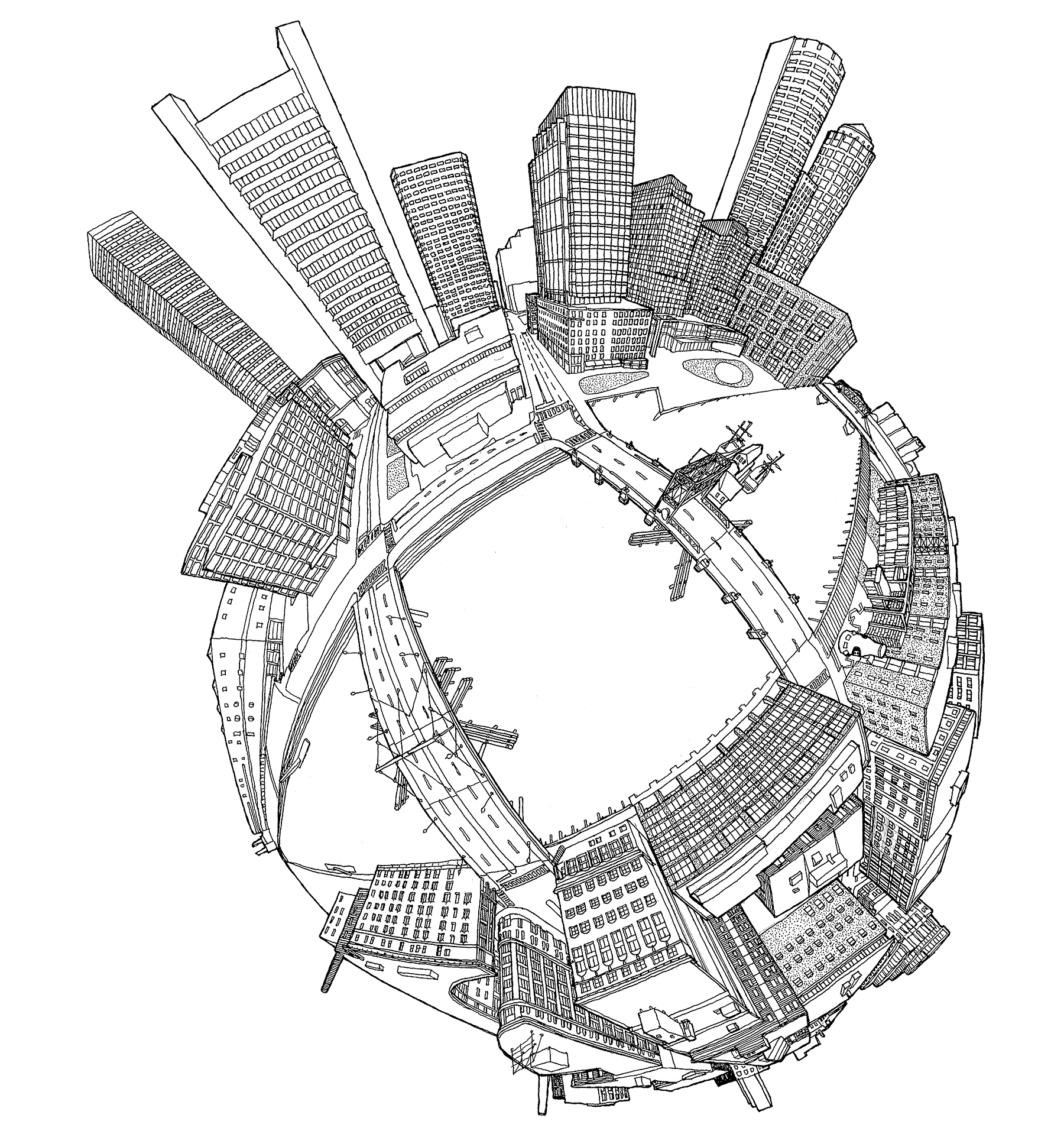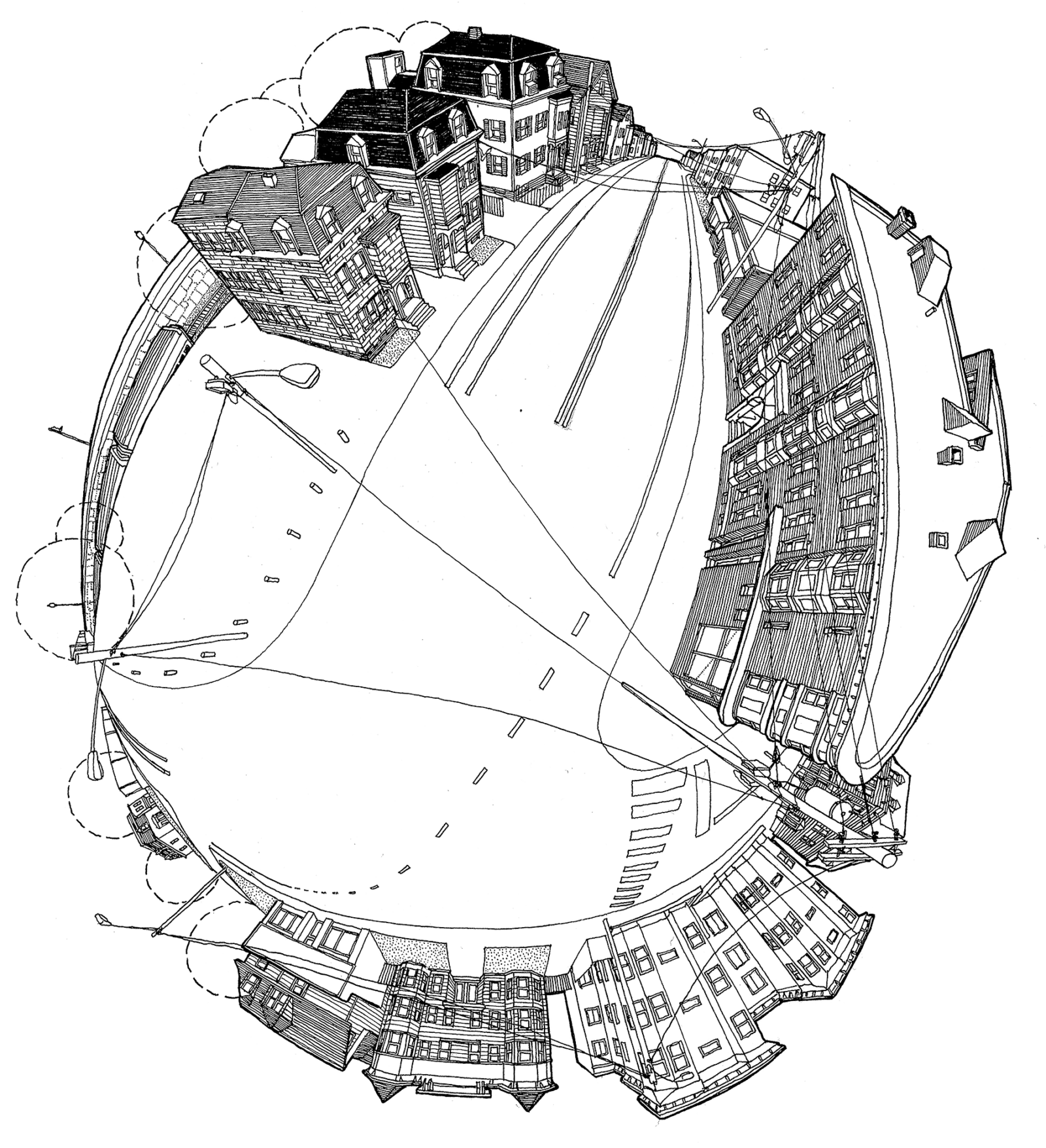As Boston nears its 400th anniversary, it is a pleasure to be in the city. Entrepreneurs and innovators keep the local economy humming. Young professionals, bikes at their ready, and empty nesters arriving with some means, populate newly deemed cool neighborhoods. Tourists fill cafes, sidewalks, and hotels, marveling that while history is found around most corners, contemporary culture is flourishing, too. Construction cranes are many and at work. The weather...well...nevermind that. The city is thriving. As Mayor Martin Walsh's Imagine Boston 2030 initiative proceeds, it seems a good time to plan. But what should we plan for?
It is exciting to observe the next sleek residential tower breaking ground, bemused though we may be about the rent or cost of a unit. Cities do not, however, derive benefit from private investment alone, and prosperous times can bring about complacency about civic ambitions. What we could use is some of the audacity of action that compelled the city forward at other moments of its history. The paradox is that periods of disinvestment rather than prosperity have tended to produce the city's most ambitious undertakings. Perhaps Imagine Boston 2030 can offer an exercise in planning from strength rather than desperation, "civic chutzpah" that is not the product of hard times.
By the end of 2015, more than 80 major projects were under way, totaling more than $7 billion in construction value. What more might a city wish? Well, the 80 represent solid private enterprise, primarily for well-to-do sectors of the economy; public purpose (beyond growth) is not a primary motive. How will the completion of these, and the start of the next 80, help Boston's broad citizenry? Will the city become more desirable, affordable, equitable by the year 2030, or sooner? Reading about the virtues of a penthouse overlooking the Back Bay, available to rent for $35,000 a month, some anxiety about the future accompanies the sense of pride in how far Boston has come since its last comprehensive plan in 1965.
A steady stream of private investment is essential for any city. But can it be channeled for greater public good? Beyond welcoming development, is our public sector keeping up with its responsibilities, with sufficient policy and planning focused on housing affordability, transit expansion, environmental resilience, education and career training, regional cooperation, and the like? These are the questions that come to mind while scanning the forest of construction cranes on the skyline.
It is well to remember that Boston is the city that quadrupled its landmass by creating developable land from mud flats and unnavigable shoals. An elegant neighborhood was built by filling in the Back Bay of the Charles River, while solving a citywide sewage crisis. If there is a contemporary counterpart, it is not yet the Innovation District. Doubts grow whether it can become so, perceived as soulless and already traffic-congested, despite still empty adjacent acres.
Where is the current effort comparable to the building of America's first subway more than a century ago? How about the dedication required to create an Emerald Necklace, then inventing a commission for conservation and infrastructure management, becoming the basis for the nation's first regional plan? Bostonians invented the idea of a Charles River Reservation, designed the Esplanade, and gradually lined the river's edge with miles of public places and trails. We constructed a massive central artery, recognized it as a problem and ultimately depressed it while widening it. In the process, the city gained nearly 300 acres of parkland, in addition to the Rose Fitzgerald Kennedy Greenway.
These are some of the notable transformations the city has undertaken, matched by a history of technological achievement: from clipper ships to the invention of the telephone to advancing radar research and introducing the microwave oven to bringing forth the computer age to accommodating one of the world's largest concentrations of educational, research, and healthcare institutions.






